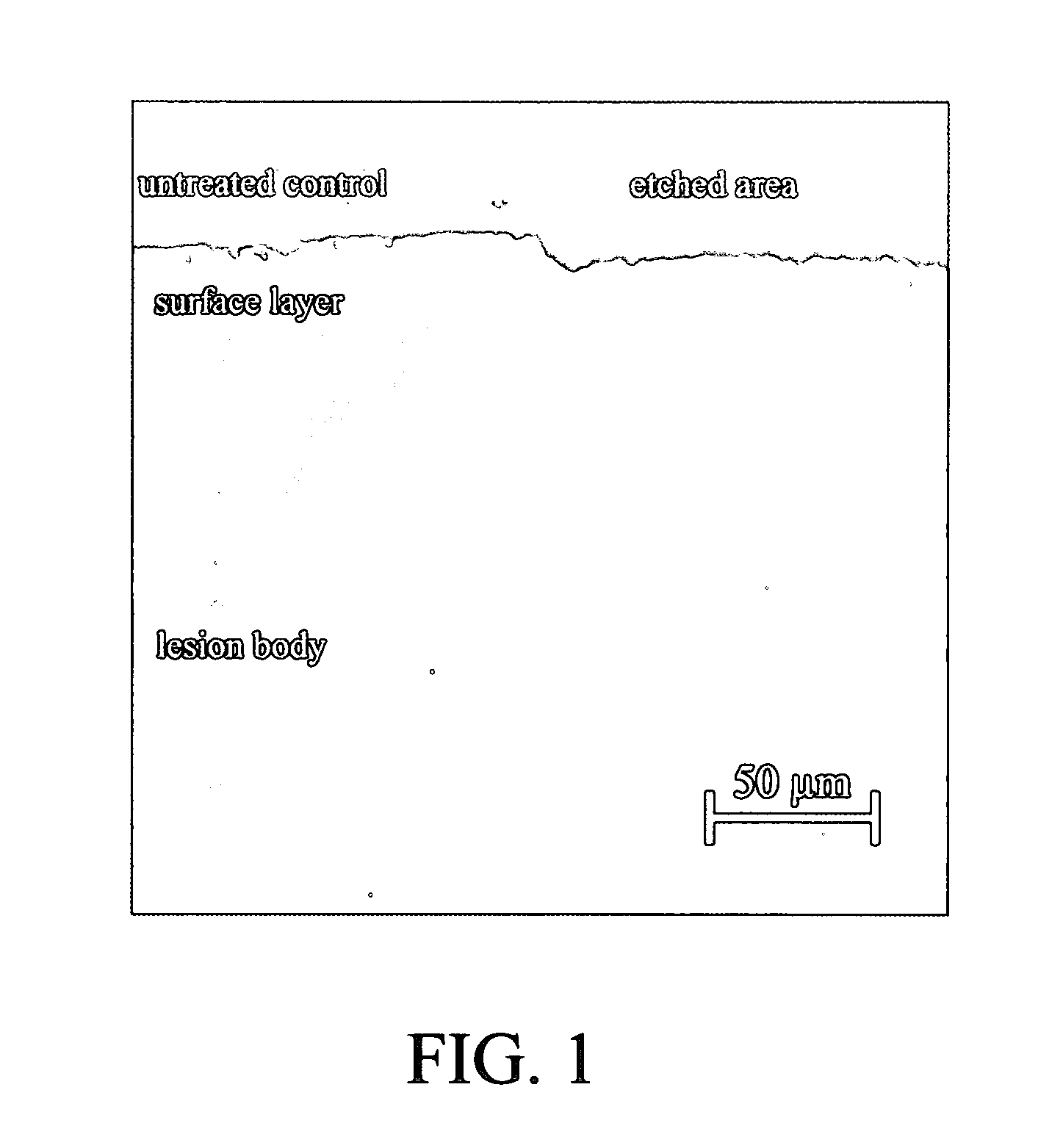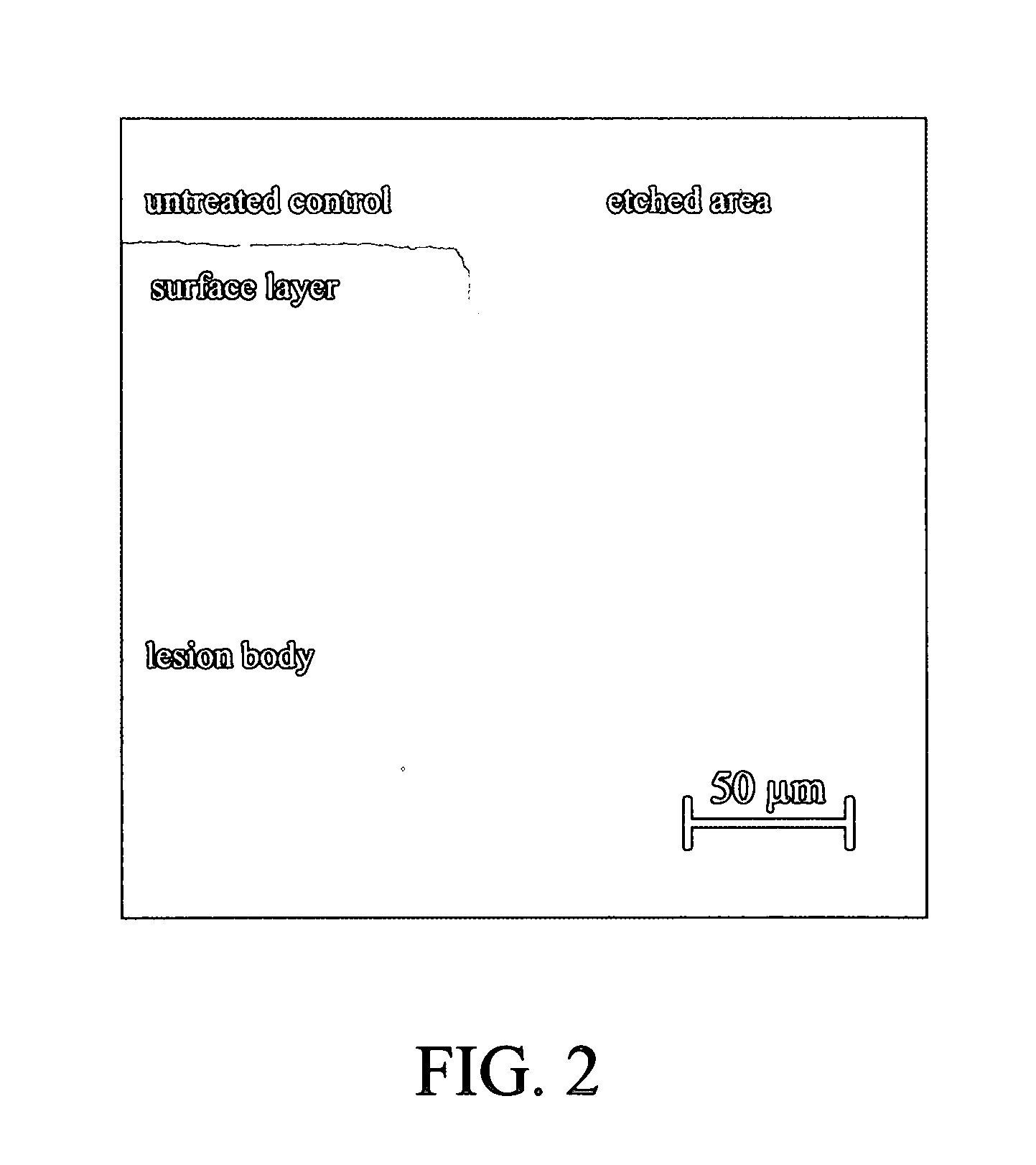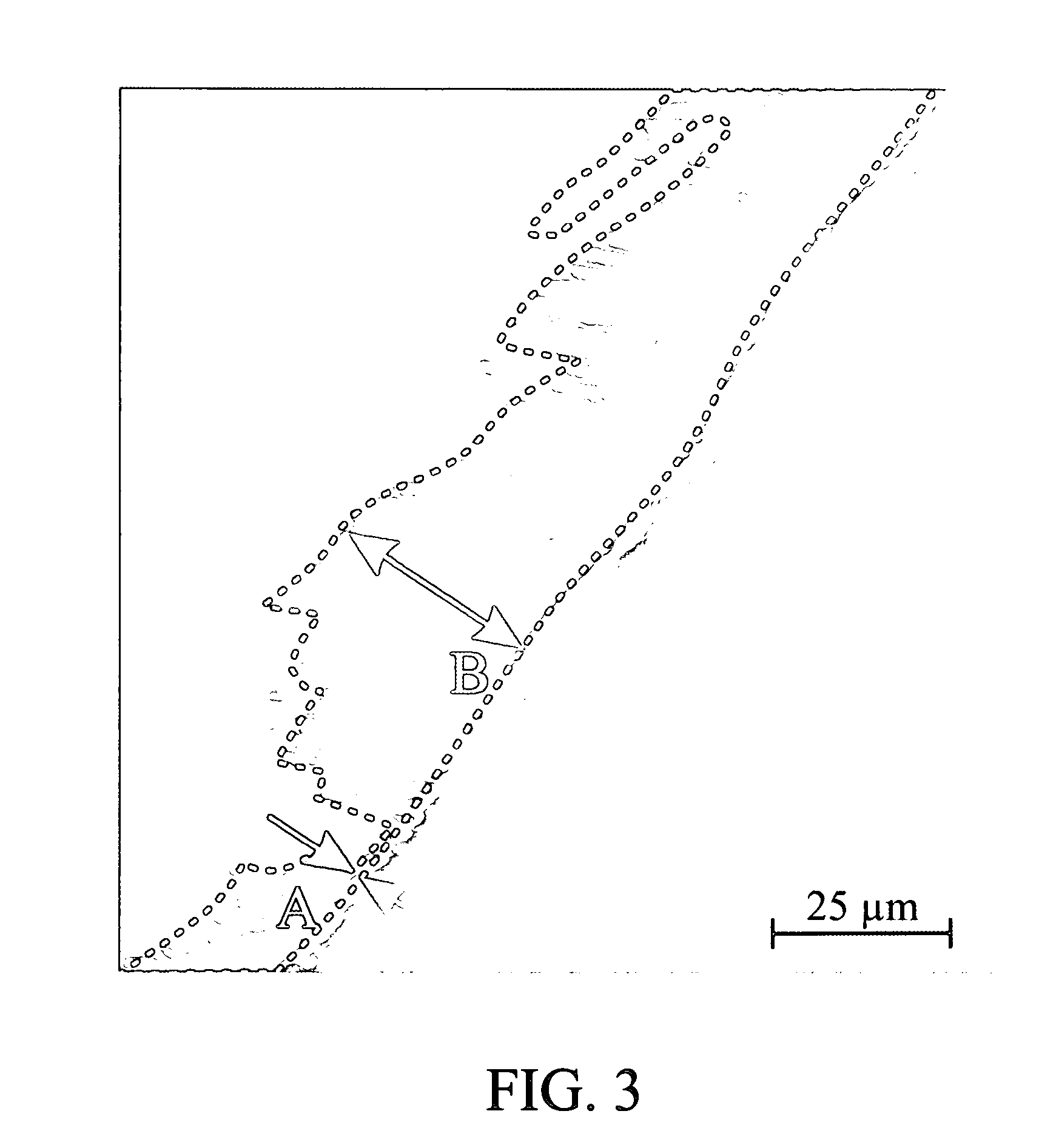Method of infiltrating enamel lesions
a technology of enamel lesions and infiltration methods, which is applied in the direction of impression caps, dental prostheses, prostheses, etc., can solve the problems of hardly achievable remineralization in approximal lesions that have reached the dentin, and difficult cleaning of approximal surfaces
- Summary
- Abstract
- Description
- Claims
- Application Information
AI Technical Summary
Benefits of technology
Problems solved by technology
Method used
Image
Examples
example 1
Effect of the Pre-treatment with a Conditioner Comprising Hydrochloric Acid
1. Material and Methods
[0073] Extracted human molars and premolars, showing approximal white spots were cut across the demineralizations. One-hundred-twenty lesions confined to the outer enamel were selected. The cut surface as well as half of each lesion, thus serving as control, was covered with nail varnish. Subsequently, the lesions were etched with either phosphoric (37%) or hydrochloric (5% or 15%) acid gel for 30 to 120 seconds (n=10).
1.2 Visualization
[0074] The specimens were dried for 5 minutes in a silicone hose, closed at one end with a stopper, and separated with silicone rings. Subsequently, Spurr's resin (Spurr, A R. A low-viscosity epoxy resin embedding medium for electron microscopy. J Ultrastruct Res, 1969, 26:31-43), labeled with 0.1 mmol / l of the fluorescent dye Rhodamine B Isothiocyanate (RITC), was doused over the specimens and the hose was closed with anothe...
example 2
Penetration of Infiltrant in the Presence or Absence of a “Pseudo-Intact Surface Layer”
1. Material and Methods
[0079] Natural enamel lesions were etched with 15% hydrochloric acid for 30 seconds. Several experimental infiltrants and the commercial adhesive Excite (Vivadent, Schaan, Lichtenstein), respectively, each labeled with the fluorescent dye RITC, were applied on the lesions using a micro brush. After a penetration time of 120 seconds the overlying material was wiped away using a cotton roll and the resins were light cured for 15 seconds (Translux CL; Heraeus Kulzer). The preparation for the CLSM observation was carried out as described above, except that the embedding resin was labeled with the fluorescent dye Fluoresceine Isothiocyanate (FITC). The CLSM observation was carried out as described above except that the double fluorescence mode was used for RITC / FITC observation.
2. Results
[0080] In FIG. 3, it is shown that enamel areas covered by a “pseudo-intact surface laye...
PUM
| Property | Measurement | Unit |
|---|---|---|
| wavelength | aaaaa | aaaaa |
| penetration time | aaaaa | aaaaa |
| penetration time | aaaaa | aaaaa |
Abstract
Description
Claims
Application Information
 Login to View More
Login to View More - R&D
- Intellectual Property
- Life Sciences
- Materials
- Tech Scout
- Unparalleled Data Quality
- Higher Quality Content
- 60% Fewer Hallucinations
Browse by: Latest US Patents, China's latest patents, Technical Efficacy Thesaurus, Application Domain, Technology Topic, Popular Technical Reports.
© 2025 PatSnap. All rights reserved.Legal|Privacy policy|Modern Slavery Act Transparency Statement|Sitemap|About US| Contact US: help@patsnap.com



